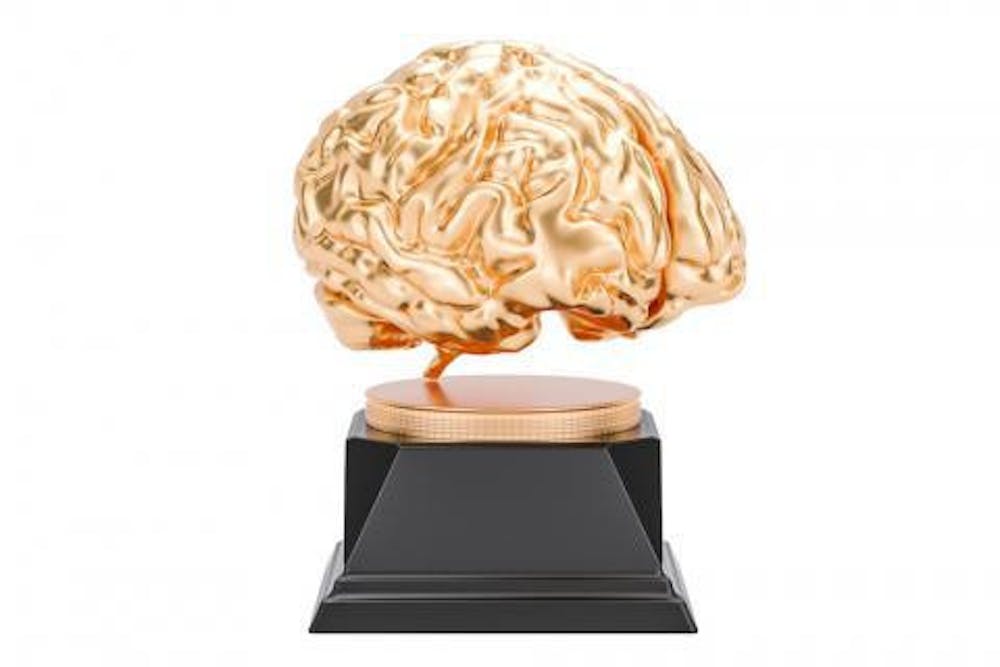Seven graduate students received the 2021 Graduate Awards in Brain Science from the Robert J. and Nancy D. Carney Institute for Brain Science in recognition of the merit of their research projects, as well as their research contributions, independence and productivity, according to the award criteria.
“Going through the process (of applying for the award) is a really great experience for students to learn to synthesize their work together and learn to convey the impacts of the research,” said Director of the Carney Institute and Professor of Neuroscience Diane Lipscombe. “These are important skills to develop, and it’s a wonderful acknowledgement of the early success of graduate students in their research.”
Some of these students researched environmental toxicity testing in the brain, genetic testing for autism spectrum disorder and memories using computational models, The Herald previously reported.
Four graduate students in the neuroscience program are also pursuing projects through the awards.
Alternative splicing in alcohol addiction
Tariq Brown GS, a fourth-year neuroscience Ph.D. student, is studying the molecular mechanisms of addiction. “Using fruit flies, I’m looking at how RNA is altered in response to (the) formation of addiction,” said Brown, who is part of the Kaun Lab, led by Associate Professor of Neuroscience Karla Kaun.
RNA is a type of genetic material that undergoes a type of modification known as alternative splicing, in which the RNA sequence can be cut and rearranged. Brown is focusing on how alcohol addiction can affect this process and result in different forms of protein expression.
The goal of Brown’s research is to study how alcohol consumption affects the expression of a certain protein receptor through alternative splicing and how this in turn impacts behavior.
“I’m really grateful for the Carney Award and would like to extend my greatest appreciation to the Carney Institute and to the committee for selecting me,” Tariq said.
Using the award’s travel stipend, Brown would like to attend the Gordon Research Conference on Alcohol and the Nervous System and the International Behavioural and Neural Genetics Society conference.
“I’m absolutely delighted that Tariq has received this prestigious award! He is a brilliant scientist working on a very innovative and exciting project,” Kaun wrote in an email to The Herald.
Tariq’s research will be “very important for understanding the mechanisms through which alcohol affects reward perception and memory,” Kaun wrote.
Neurogenesis and stem cells in Alzheimer's disease
Kelsey Babcock GS, a fourth-year neuroscience Ph.D. student, is studying the molecular mechanisms of Alzheimer’s disease. “Neurogenesis, the generation of new neurons in the adult hippocampus, plays a key role in learning and memory,” said Babcock, who is a part of the lab of Assistant Professor of Molecular Biology, Cell Biology and Biochemistry Ashley Webb.
In Alzheimer’s disease, “neurogenesis is reduced,” Babcock added.
By using a mouse model to look at stem cells and protein pathways, Babcock aims to understand causes for the loss of neurogenesis. Her goal is to ultimately identify strategies to prevent or reverse the loss of neurogenesis and cognitive decline in patients with Alzeimer’s disease.
“I’m super thankful for this award, and it feels very rewarding to receive this funding so I can better pursue my own research,” Babcock said.
Neuropeptides and feeding decisions
Doruk Savaş GS, a fifth-year neuroscience Ph.D. student, is exploring how the brain dictates what feeding decisions animals make. Savaş is part of the lab of Professor of Ophthalmology, Visual Sciences and Neuroscience Gilad Barnea.
“I’ve screened different kinds of neurons in the brain and have found (that) certain molecules called neuropeptides … may influence our decisions in everyday life,” Savaş said. These neuropeptides, which are signaling messengers that modulate other neurons, can receive input from taste neurons, he added.
By artificially activating certain neurons that release neuropeptides using transgenic tools, researchers can see how certain neuropeptides influence flies’ feeding behavior, Savaş said. He hopes the research sheds light on how sensory systems work together using external inputs and animals’ internal metabolic state to influence behavior.
“When you’re doing your Ph.D. research, you’re really pushing the boundaries of what we know. And sometimes you don’t know if you’re pushing (in) the right direction. … Receiving an award like this is important because it is a form of external validation,” Savaş said. “It increases your ambition.”
“As a mentor, nothing gives me more pleasure than seeing my students develop and succeed. Doruk is truly an exceptional student who has all one needs to become a great independent scientist. It is nice to see this acknowledged,” Barnea wrote in an email to The Herald.
A molecular picture of the brain
Sara Zeppilli GS, a fifth-year neuroscience Ph.D. student, is working on generating a molecular picture of the mammalian paleocortex, a more primitive region of the brain, according to the University announcement of the awards. She is a member of Associate Professor of Brain Science Alexander Fleischmann’s lab.
Using machine learning to generate this picture, Zeppili aims to better understand the evolution of the brain, according to the announcement.
“It has been a great privilege to work with Sara to develop exciting new experimental and computational approaches for addressing fundamental questions in brain science,” Fleischmann wrote in an email to The Herald.

Jared is a Senior Staff Writer for Science and Research. He is a senior from Albuquerque, New Mexico studying physiology and biotechnology. Outside of The Herald he likes to fish, ride bikes and research the role of metals in human health and disease.



